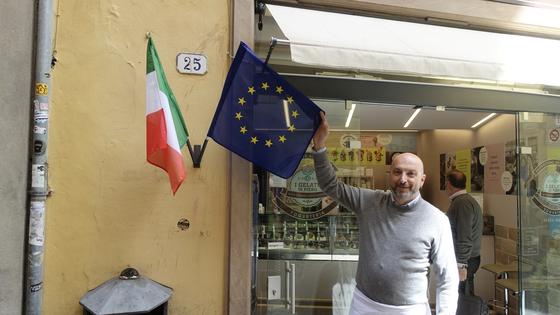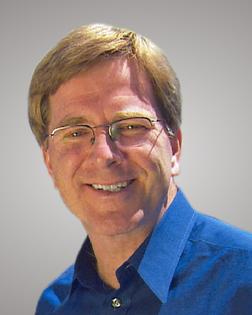Rick Steves’ Europe: European Union 102 -- How the EU works
Last week, a Parisian bench in Washington, DC, got me thinking about how the European Union was created as a peace project. But it’s grown far beyond just sharing coal and steel resources to avoid war among its countries.
Now 75 years old, today’s European Union oversees common political policies while also funding infrastructure projects, cultural preservation measures, and initiatives that ensure the Champagne in your glass comes from the French region of Champagne. Meanwhile, the EU allows free movement — meaning an Italian citizen can easily study, work, and live in France, Sweden, or any EU country.
That movement also extends to trade, making the EU one huge market. This helps its (relatively small) countries play ball with bigger, stronger economies — like the US and China — who, in exchange, can easily tap into the EU’s 450 million consumers at once (instead of juggling 27 different rates and requirements). Nineteen EU countries also use a common currency, the euro, making things even easier.
This has worked for decades, and helped once-struggling economies like Ireland catch up with the rest of the world. But times are changing, and America wants to out-muscle the EU. European leadership must now figure out how to ensure this doesn’t smother what their members — and allies — have long enjoyed.
These chats will wind their way through the EU’s intertwined system of government, which is intimidatingly complex and not exactly the sexiest thing a travel writer can cover. But I find that untying this bureaucratic knot helps reveal what people like and dislike about the bloc.
The EU has many branches, but four see the most action. First is the European Council, which consists of the elected leaders of each member country (think French President Emmanuel Macron and Italian Prime Minister Giorgia Meloni). They set the EU’s overall direction and leave it to the other branches to take forward.
Of these, the European Commission wields the most power. This is the EU’s executive arm, which drafts laws based on the Council’s instruction. It’s made up of 27 “commissioners” (one from each EU country), who manage different portfolios ranging from climate, to economy, to “intergenerational fairness.” The Commission President — currently Ursula von der Leyen — is the de facto leader of the EU.
Once the Commission proposes legislation, it’s reviewed by two other branches: the European Parliament — similar to our House of Representatives, where each country directly elects reps — and the Council of the European Union, which is made up of groups of each country’s cabinet members like defense ministers, agricultural ministers, and so on. (Did I mention the EU is commonly criticized for being heavily bureaucratic?)
This government labyrinth is by no means perfect. The EU’s work often proves too idealistic, and its clunky processes regularly get in its own way. Europeans (and American visitors) love to vent about how the EU’s regulation-happy mindset results in things like dictating the proper curve of a cucumber (yes, they once did this). It expects people to actually know the difference between the European Council and Council of the European Union. And often the stronger, richer countries — like France and Germany — give more than others.
But even the biggest Euroskeptic recognizes that, by weaving together the economies of former enemies — like France and Germany — everyone has become so interconnected that Europe will never again suffer devastation from a major war, as they did twice last century. Many EU countries — like France and Germany — still don’t agree on most things. But they’re too intertwined to take up arms over their differences.
For Europeans, that’s often enough to see the EU as successful and worthwhile — even if some American critics might find it less convincing. But I think the big difference here is that Europe really knows what a war is. Of course, if you have a loved one who served, you know, too…but as a society, the United States can’t remember actually hosting a war.
Europe can. It ripped itself to shreds twice within my grandparents’ lifetime. France lost as many people as America lost in the Iraq War, in just one day, during World War I, many times — and lost as many people as we lost in Vietnam in one month. And it happened again, and again, and again until, by the end of WWII, roughly half of French men between 15 and 30 were casualties. Every European country has a similar story.
Because of this, Europeans prefer to deal with the EU’s endless diplomacy and bureaucracy rather than dabble in a once-in-a-while war. This peace project has many flaws, but I find it innovative and awe-inspiring nonetheless. And I’m not alone: In 2012, the European Union and its 450 million citizens were rewarded with the Nobel Peace Prize for “turning Europe from a continent of war to a continent of peace.”
========
(Rick Steves (www.ricksteves.com) writes European guidebooks, hosts travel shows on public TV and radio, and organizes European tours. This column revisits some of Rick's favorite places over the past two decades. You can email Rick at rick@ricksteves.com and follow his blog on Facebook.)
©2025 Rick Steves. Distributed by Tribune Content Agency, LLC.
(c)2025 RICK STEVES DISTRIBUTED BY TRIBUNE MEDIA SERVICES, INC.














Comments